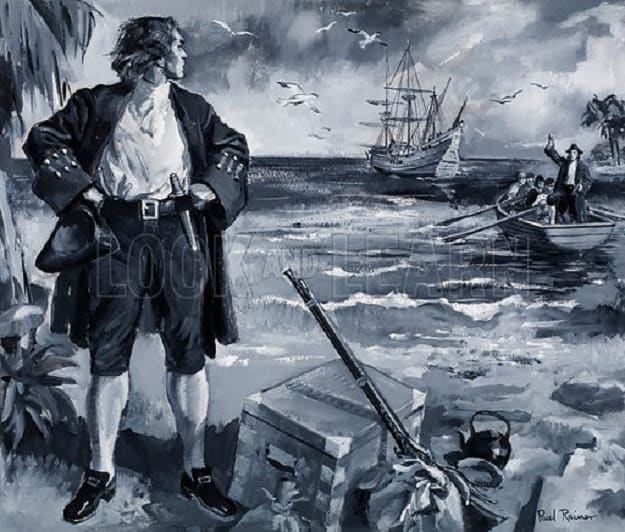The survival of Alexander Selkirk for years as a castaway on an uninhabited island in the eighteenth century was one of the era’s most gripping real life adventures. It attracted significant attention, and became a key inspiration behind the fictional Robinson Crusoe. Below are some fascinating facts about that and other skin-of-the-teeth survival stories from history.

ADVERTISEMENT - CONTINUE READING BELOW
From Delinquent Youth to Marooned Man
Alexander Selkirk (1676 – 1721), also spelled Selcraig or Selchraig – consistent spelling was not a big deal back then – was a bad boy from early on. An unruly youth and teenage delinquent, Selkirk was born and raised in Fife, Scotland. He first appears in the historic record in 1693, when he was summoned by the church elders of the Kirk Session for “indecent conduct at church“. Just what the indecent conduct was is lost to history. Selkirk did not show up: Kirk records note that he: “did not [appear] being gone away to [the] sea“. He was back in Fife by 1701, when he got into trouble and was summoned by the Kirk Session once again. This time for assaulting his brothers, father, and a brother’s wife after he was pranked with a cup of salt water. He appeared before the congregation, apologized and promised to mend his ways.

ADVERTISEMENT - CONTINUE READING BELOW
Selkirk returned to the sea as a privateer, or legalized pirate. A competent seaman, he rose to become Sailing Master, or navigator. He remained quarrelsome, however, and it eventually caught up with him. In 1704, he served on the ship Cinque Ports under a Captain Thomas Stradling, with whom he beefed nonstop. When the ship stopped at the uninhabited Juan Fernandez Archipelago, about 420 miles off the coast of Chile, Selkirk complained that the vessel was unseaworthy, and demanded extensive repairs. The captain refused, so Selkirk stated that he would rather stay behind on an uninhabited island, rather than sail on in such a dangerous ship. To Selkirk’s dismay, Captain Stradling called his bluff, and left him on an island with a knife, hatchet, musket, cooking pot, some food, and a Bible. It was the start of a years-long ordeal.

